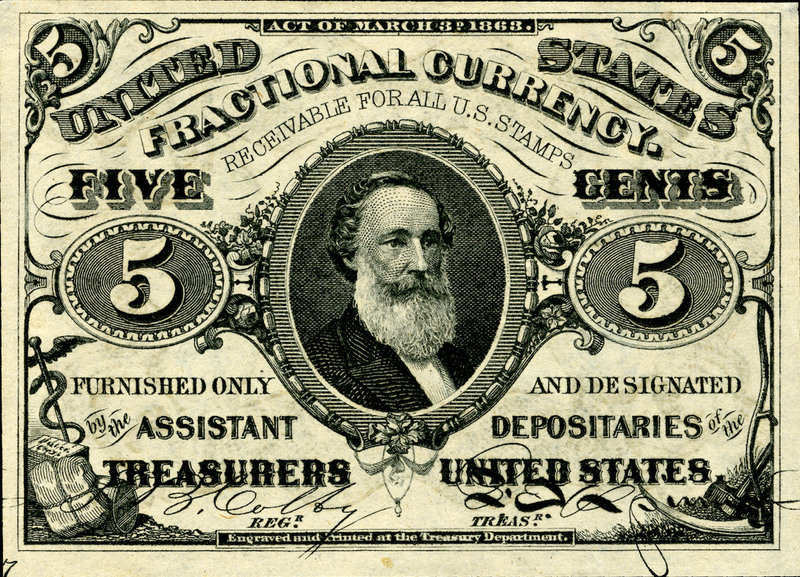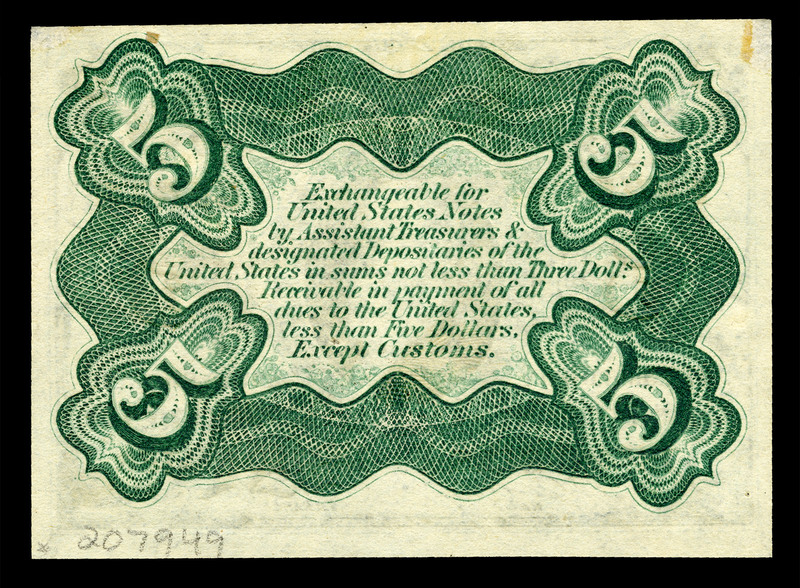
In 1866, Spencer M. Clark, then Superintendent of the National Currency Bureau, made a daring decision: to print his own face on U.S. currency.
Clark, who served as Superintendent from 1862 to 1868, had no authorization from his superiors to do this.
But U.S. paper bills were in flux because of the recent introduction of fractional money, and as the supervisor of the new bills, he was in a unique position to influence the design.From 1862 to 1876, the U.S. Treasury issued fractional money to combat a growing coin shortage. “At the beginning of the Civil War,” according to the website Antique Money, “people started hoarding coins for their precious metal content.” To avoid a crisis, the Treasury introduced paper money to represent a cent amount rather than a dollar amount. These fractional bills were physically smaller than dollars and consisted of three-cent, five-cent, 10-cent, 25-cent, and 50-cent notes.

It was the third issue of that five-cent note that caught Clark’s attention. Congress had asked for the note to honor William Clark of the Lewis and Clark explorations. But allegedly, the document that reached the Treasury specified only that the new bill should honor “Clark,” without clarifying which one—and Spencer M. Clark, despite surely knowing Congress’s true intention, seized the opportunity to print his own face on the bill.
The move infuriated Congress. Clark was already roundly disliked because of the scandals he had brought the…
The post A Treasury Official in 1866 Put His Own Face on U.S. Currency appeared first on FeedBox.